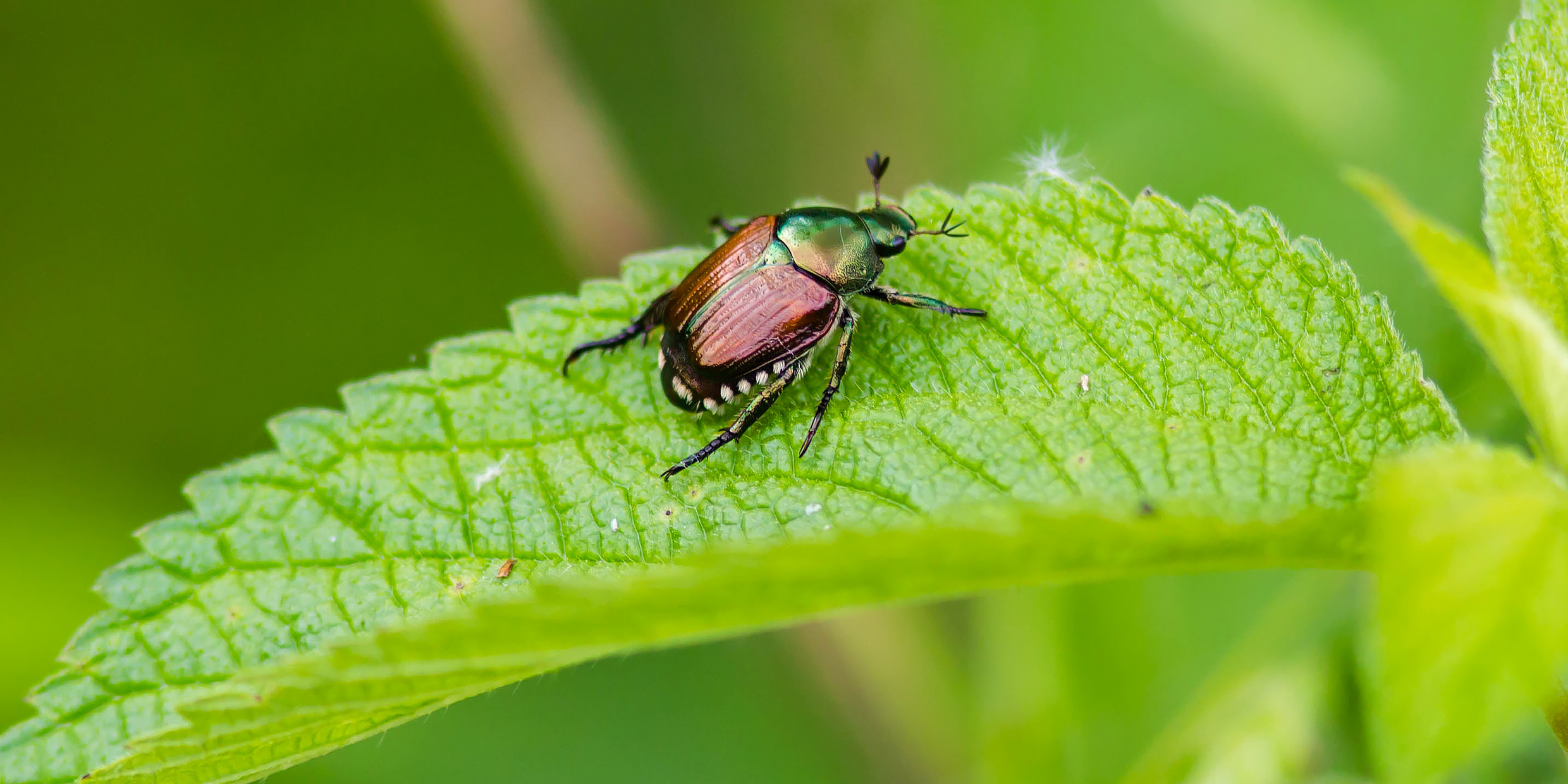Originally published 20 May 1996
A famous story in the history of science has the classical scholar Benjamin Jowett ask the biologist J. B. S. Haldane what he had learned about God from his scientific studies.
Haldane answered, “He has an inordinate fondness for beetles.”
The conversation supposedly took place at high table at Balliol College, Oxford. Never mind that Haldane was born the year before Jowett died. Perhaps it was Haldane’s father, a physiologist, or his uncle, later Lord Chancellor, who was questioned by Jowett. Perhaps a Jowett wasn’t involved at all. More likely, the entire story is an invention.
What is not in question is God’s fondness for beetles. Beetles constitute one-third of all named animal species, and two-fifths of all insects. More than 300,000 species of beetles have been described, and these are less than a tenth of the number that are estimated to exist.
Never has God’s fondness for beetles been more apparent than in the spring of 1996. Our lawns have been devoured from below by the grubs of Japanese beetles. We can scoop up in our hand brown crumbly soil that used to be springy green turf. Each handful contains one, two, three, or more inch-long white larvae, curled in their fat contentment.
We react, of course, by spreading vast amounts of insecticide. We are advised, for example, that diazinon can be effective, but to use it sparingly around children and pets. But what about beneficial insects, butterflies, birds? What about raccoons, skunks, and moles? What about ground water and runoff? What’s not good for children and pets can hardly be cookies and cream for the rest of nature.
It’s a familiar story. We screw up the balance of nature, cheered on by big business, then try to solve the problem by throwing technology at it, cheered on by big business. We rant against the Japanese beetle for doing what we are doing ourselves — extending our range with little thought of the consequences for other species.
The Japanese beetle is no big deal in Japan. Its numbers are restricted by natural enemies: parasites, predatory insects, and birds. A female Japanese beetle lays about 50 eggs in the course of a season. In Japan, typically only two of these eggs reach maturity, and a constant population is maintained.
In 1916, a few Japanese beetles arrived in Riverton, N.J., on the rootstock of imported plants. When they were discovered, every effort was made to wipe them out. For several years a battle raged between the exterminators and the beetles. At last, in 1920, the exterminators threw in the towel.
At that point, the beetles infested only 100 acres. By 1930, Japanese beetles had spread over much of New Jersey, Delaware, and Pennsylvania. A 1996 range map from the National Agricultural Pest Information System shows an ugly splotch reaching out from New Jersey to include virtually every state east of the Mississippi, with outlying colonies in Minnesota and western Kansas. The Japanese beetle increases its range at a rate of about 5 to 10 miles per year.
After a brief feeding period in the spring, the awakening white larvae of Japanese beetles pupate in earthen cells and emerge as adults. The first beetles out of the ground release a “let’s get together” odor that attracts other beetles. Females also release a sex odor that attracts males. The summer is one long orgy of feeding on our loveliest plants and mating. Most eggs are laid by mid-August.
Grubs hatch after a week or two and begin to feed on the roots of our lawns. By late September or October, the grubs dig deeper into the soil to overwinter. When the soil temperature rises in mid-April, they return to the near the surface and start nibbling again.
Let’s assume that without traditional enemies, 25 Japanese beetles reach adulthood for every 50 eggs that are laid in the soil. In five seasons, one beetle has become ten million. The splotch on the range map spreads. Time to call in the pesticides — acephate, carbaryl, chlorpyrifos, diazinon, isofenphos, malathion, methoxychlor, rotenone plus pyrethrin, trichlorfon. The tank trucks roll into our neighborhoods. The disclaimers go up: “Not good for pets and children.”
It might be useful to try to view the situation from the point of view of the beetles. After all, an adult Japanese beetle is a lovely creature. One can see why God is so fond of beetles; many of them are absolute jewels of design, and the Japanese beetle with its iridescent cope of copper and bronze is among the prettiest.
When we see these gorgeous favorites of the deity turn the lawn into a grassless crumble and the fruit trees into leafless sticks, we should bear in mind that we do much the same thing to nature on an even grander scale. The Japanese beetle is driven by an irresistible urge to explode its numbers. We are driven by the same urge, and we have shown precious little inclination to control it.



